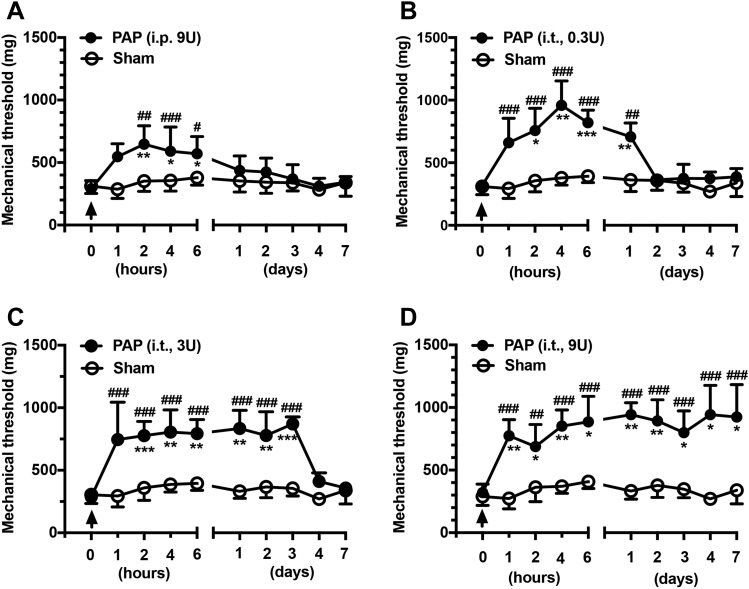Figure 4.
Effects of exogenous prostatic acid phosphatase (PAP) on the mechanical threshold in resiniferatoxin (RTX) neuropathy. (A–D) Prostatic acid phosphatase was replenished with purified human PAP (hPAP) administered through either the intraperitoneal (i.p.) injection (A) or intrathecal (i.t.) lumbar puncture (B–D) route in different bioactive doses. The arrow indicates the time point of hPAP administration. The effect of hPAP on the mechanical threshold was examined through von Frey monofilament tests using up-and-down algorithms at 1 hour (h1), 2 hours (h2), 4 hours (h4), 6 hours (h6), 1 day (D1), 2 days (D2), 3 days (D3), 4 days (D4), and 7 days (D7) after hPAP administration. (A) The diagram illustrates the effects of 9 U of hPAP on the mechanical threshold (filled circle, n = 6) in comparison with those of saline treatment (sham group; open circle, n = 8) through the i.p. route. (B–D) The graphs show the analgesic effects of hPAP administered at doses of 0.3 U (B, n = 5), 3 U (C, n = 6), and 9 U (D, n = 5) through the i.t. route in RTX neuropathy (filled circle) in comparison with sham group (open circle, n = 6). *P < 0.05, **P < 0.01, and ***P < 0.001: pairing repeated-measures ANOVA followed the Bonferroni post hoc test comparing values before and after hPAP administration. #P < 0.05, ##P < 0.01, and ###P < 0.001: nonpairing repeated-measures ANOVA followed the Bonferroni post hoc test between hPAP and sham group. ANOVA, analysis of variance.

